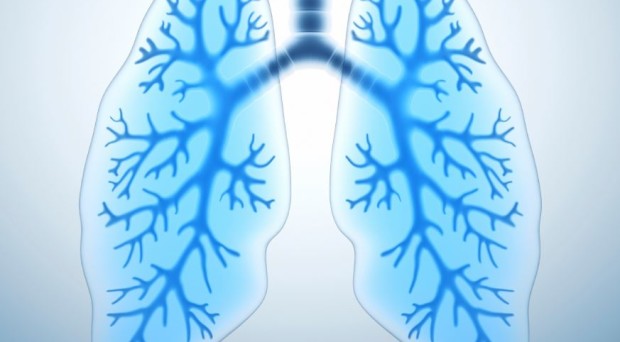
 Professor Allan Cripps, Editor-in-Chief of Pneumonia, is recognized internationally for his research in the field of mucosal immunology. Much of this work has been directed towards mucosal immunization against a range of bacterial pathogens, particularly those of the respiratory tract. In 2015 he was awarded an Officer of the Order of Australia in recognition of his contributions to mucosal immunization, public health and higher education.
Professor Allan Cripps, Editor-in-Chief of Pneumonia, is recognized internationally for his research in the field of mucosal immunology. Much of this work has been directed towards mucosal immunization against a range of bacterial pathogens, particularly those of the respiratory tract. In 2015 he was awarded an Officer of the Order of Australia in recognition of his contributions to mucosal immunization, public health and higher education.
Professor Cripps joined Griffith University in May 2003 where he has been responsible for the establishment of the University’s School of Medicine and Health Faculty. He is currently the Executive Head of the Health Faculty at Griffith University.
This is the only journal exclusively focused on pneumonia. Why is this disease-specific focus so important?
Pneumonia is one of the leading causes of mortality in children under the age of five worldwide. In comparison to other childhood diseases such as malaria and diarrhoea, the situation for pneumonia is more complicated.
The diagnosis is not straightforward, the decision to treat with antibiotics is often ambiguous, and preventative interventions are complicated in that a multipronged approach is necessary.
Environmental risk factors, including tobacco smoke exposure and indoor and outdoor air pollution also need to be addressed.
A preventative approach is required, based on effective case management practices, vaccination, strategies to improve childhood nutrition and correct deficiencies in essential micronutrients, and global interventions to address poverty.
As recognized by the World Health Organization (WHO) in the mid 1990s when the concept of the Integrated Management of Childhood Illness program was introduced, the prevention of pneumonia requires a child-specific rather than a disease-specific approach.
By forming a journal with an exclusive focus on pneumonia, we are dedicated to establishing an international forum for pneumonia in the broadest context and as a means for bringing together knowledge related to pathogenesis, treatment and prevention of pneumonia.
Pneumonia has migrated from another publication platform to join BioMed Central in 2016. When was the journal founded, and how did this come about?
The desire to form a publication that would act as a forum for all current research and knowledge about pneumonia was one that had been discussed for a number of years.
The journal published its first volume in 2012; however, the desire to form a publication that would act as a forum for all current research and knowledge about pneumonia was one that had been discussed for a number of years.
In 2006, I had the privilege to co-chair with Professor Amanda Leach the Fifth International Symposium on Pneumococci and Pneumococcal Diseases (ISPPD5) in Alice Springs, Central Australia.
Prior to the meeting, an international panel led by Professor Michael Alpers and Professor Kim Mulholland assembled a discussion paper, which called for a global action plan against childhood pneumonia. This paper was discussed at ISPPD5 and is known as the ‘ISPPD Declaration’.
During the course of ISPPD5, many positive comments were received on the value of the international panel in advancing the fight against childhood mortality caused by pneumonia and suggestions were made for the development of a forum to raise the global profile of pneumonia as a significant disease in its own right.
While discussions and calls to action continued, it was following the ISPPD8 (2012) meeting in Iguacu Falls, Brazil, that the drive to establish a publication that would help raise the global profile of the disease gained traction.
Professor Kim Mulholland summarized advances that had been made in the roll out of the Global Action Plan for the Prevention and Control of Pneumonia (GAPP). Despite these advances, pneumonia remained (and remains) one of the leading causes of child death worldwide.
Pneumonia commenced publishing later that year under Griffith University ePress and was supported by the University throughout its launch and subsequent early growth period. Pneumonia was awarded a Bill and Melinda Gates Foundation Grant in 2015 to ensure the early success and sustainable development of the journal.
How has the field of pneumonia advanced from both a clinical and a research perspective during the past two decades?
Over the past 20 years there have been significant improvements in the clinical management of patients with pneumonia through integrated case management practices and more effective antibiotic use.
The introduction of pneumococcal and Haemophilus influenzae vaccines are a significant addition to pneumonia control strategies in children.
The introduction of pneumococcal and Haemophilus influenzae vaccines are a significant addition to pneumonia control strategies in children and there is now evidence to suggest that pneumococcal immunization of the elderly is effective.
Work of WHO, UNICEF and the GAVI Alliance, with substantial support from the Bill and Melinda Gates Foundation, has done a great deal in ensuring an Integrated Management of Childhood Illness strategy of care and vaccine access to children in many developing countries who are most at risk of death due to pneumonia.
With this international effort it is hoped that control of the ongoing ‘pneumonia epidemic’ in the developing world will eventually be achieved.
What are the key areas of focus for pneumonia research going forward?
There remain significant gaps in our knowledge in relation to the pathogenesis, diagnosis, treatment and prevention of pneumonia. Future research will need to be focused on these gaps as well developing systems for the surveillance of disease aetiology, anti-microbial resistance and mortality.
Research is also needed to develop more effective vaccines against causative microbes, particularly respiratory viral infections, such as Respiratory Syncytial Virus.
As Editor-in-Chief, what are your main goals for the journal in its next phase?
The primary aim of the journal is to be recognized as the premier, peer-reviewed journal for publishing scientific and clinical research on the topic of pneumonia.
We firmly believe in providing equal opportunity to both access and generate knowledge, and we will continue to disseminate, from a variety of sources, the most up-to-date information in the field of pneumonia.
This new chapter in the journal’s development provides a crucial platform for raising the global profile of the disease, and we look forward to ensuring that Pneumonia remains sustainable and continues to grow in reach and impact under its new publishing arrangement.
One Comment